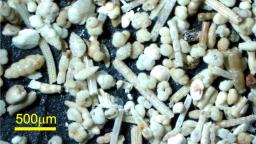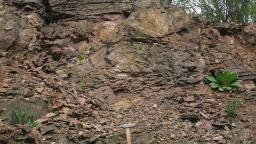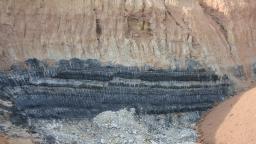The Czech Geological Survey (CGS) investigates global environmental and climatic changes in the Earth´s geological past by observing how they affected the evolution, biodiversity and migration of organisms. The sedimentary record is a unique archive of the evolution of ancient ecosystems. Multidisciplinary study of this archive aids in reconstructing ancient marine and terrestrial ecosystems and their evolution over time, and to examine how ancient ecosystems responded to past environmental and climatic changes. This is of great importance for predicting the impacts of current changes and their long-term consequences.
Global change
Marine ecosystems
Research activities focus on Paleozoic, Mesozoic and Cenozoic marine sediments and their fossil content. The aim is to reconstruct ancient marine ecosystems and their evolution over time and, primarily, to find out how the ecosystems responded to and coped with environmental and climatic changes. For this purpose, it is vital to acquire as much information as possible about their environment, such as seawater temperature, salinity, nutrient content, oxygen in seawater, atmospheric CO2 and, last but not least, to know the fossil content of sediments in detail.
Proxy measurement
Proxies, or representative measures, are used because physico-chemical parameters cannot be measured directly. For instance, such proxies are ratios of specific stable isotopes of elements occurring in the minerals of sedimentary rocks (e.g. shells of organisms), concentrations and ratios of specific trace elements in sediments, or distributions of specific sediment types (e.g. beach sediments, coal, coral reefs, microbial sediments, glacial deposits) and fossil communities as well.
Biostratigraphic correlation
Fossilized organisms are key witnesses of our planet‘s geological history. They provide us with unique information on the course of evolution and on how organisms responded to various environmental changes. Specific groups of organisms (referred to as index fossils) are used in biostratigraphic correlation, which in principle demonstrates that strata containing identical fossil species are of the same age, allowing us to compare sedimentary rocks from around the world, which is essential for reconstructing global events. The above-mentioned objectives require taxonomic analyses, which identify and classify fossils based on morphology. Taxonomy provides the necessary foundations for biostratigraphy (determining the age of sediments based on fossil occurrence) and for the study of the phylogeny, diversity and paleoecology of organisms.
Multidisciplinary approach to research
Sedimentological, paleontological and paleoecological research give us an idea of the environment in which sediments were deposited, for instance of the water energy, relative depth, free oxygen concentration, range of solar radiation, or amount of nutrients, as well as of the characteristics of organism communities. Geochemical methods are used to determine, for example, the oxygen isotopic composition of marine bioapatites, which allows for the average seawater temperature to be estimated. We are also interested in, for instance, the isotopic composition of carbonate and organic carbon, which gives us an idea of the carbon cycle, reflecting geochemical and biological processes and also a given climatic situation (e.g. the amount of atmospheric CO2).
Also very helpful is the use of some less traditional isotope systems (e.g., Cr, Sr, Ca, Mo, Ba, and U isotopes), which are proxies for the intensity of weathering and which provide information on the input of terrestrial weathering products into the ocean or on hydrothermal marine processes, on the global seawater redox state, on the CaCO3 saturation of seawater, and so forth. The study of the content of specific trace elements in marine sediments used as redox proxies or bioproductivity indicators is equally important.
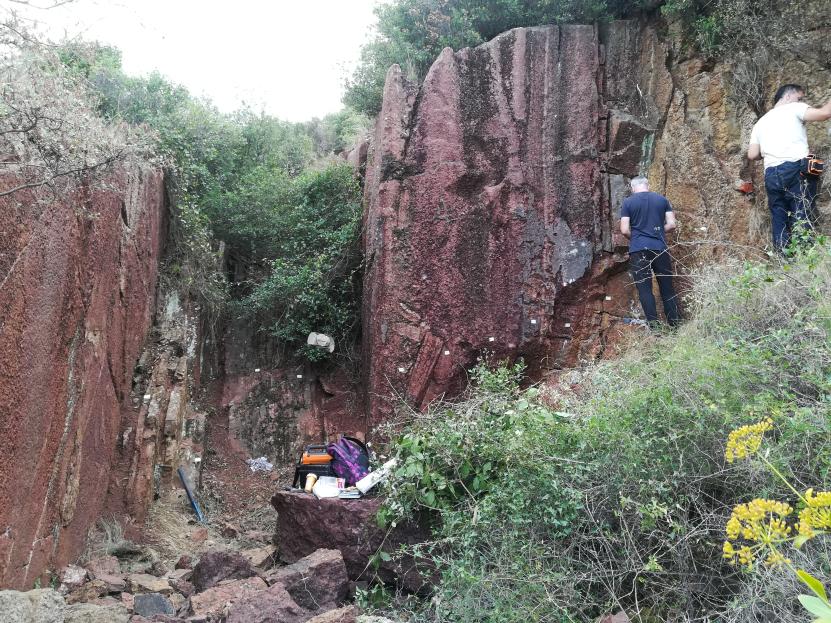
Part of the research team‘s work also involves the publication of the Bulletin of Geosciences, which is a world-renowned science journal focusing on paleontology (currently the world’s 15th most important journal in this field).
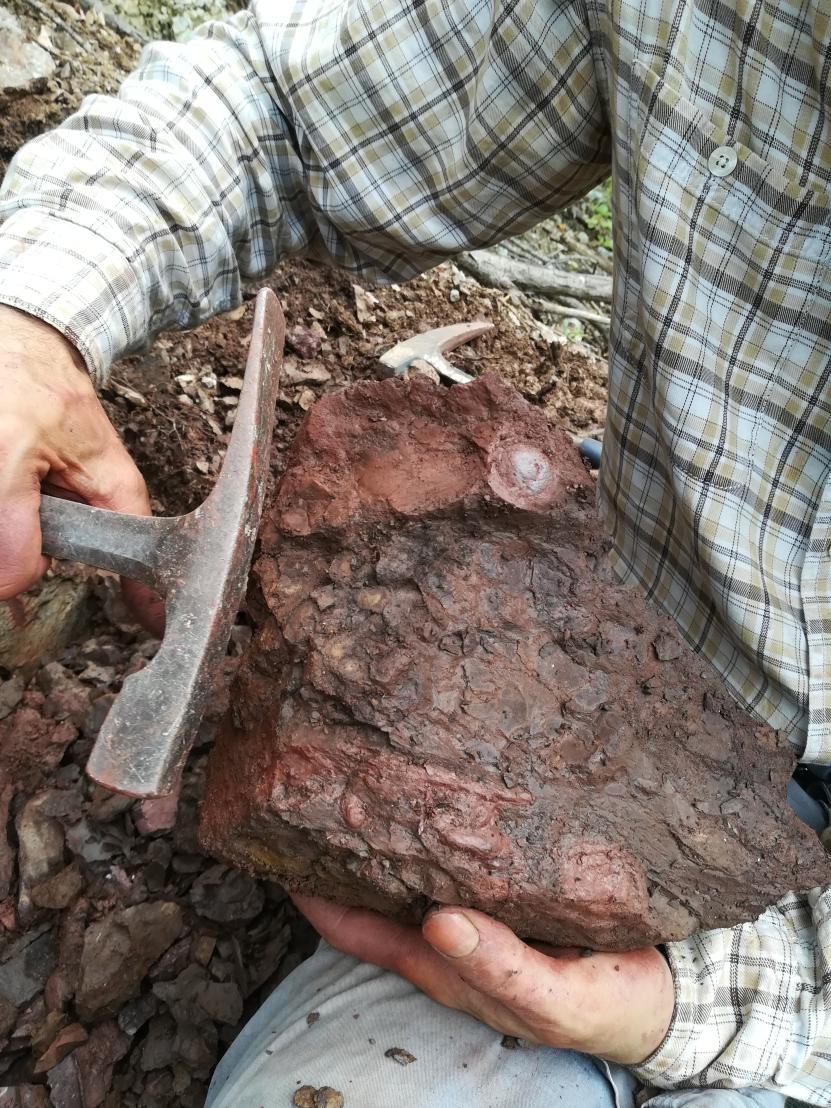
Terrestrial ecosystems
Carboniferous sediments and flora
Research focuses particularly on the Upper Paleozoic, when terrestrial flora evolved and coal deposits were formed, with the study of Carboniferous vegetation and sedimentation environments standing at the forefront. As in the case of the Quaternary, changes in the extent of glaciation in polar regions, which influenced climate change in tropical regions, occurred in the Carboniferous as well. Plant communities serve as proxies for these changes, because the environmental requirements for species and plant groups are generally known. Humans are currently monitoring the increasing concentration of atmospheric CO2 with concern. Similar changes occurred during the Carboniferous, only at a slower place – in the case of some longevous Permo-Carboniferous species, it is possible to observe the changes in stomatal density at various time periods and, thereby also indirectly, the relative changes in CO2 concentrations in the paleoatmosphere.
Climate impacts
The climate also directly influences the sedimentation environment, particularly in continental basins located far from the influence of sea level variations. The analysis of weathering/paleosoil horizons, which form in direct contact with the atmosphere, helps define the climatic conditions during their formation (precipitation-evaporation ratio, seasonality, hydrological regime of soils, atmospheric CO2 pressure, etc.). An architectural analysis of fluvial sediments can be used to characterize river flow dynamics and the morphology of a fluvial landscape, which is sensitive to climate change.
Interaction of volcanism, sedimentary environments and the biosphere
The research activities of the volcanic systems team focus on the role of Paleozoic and Cenozoic volcanism in the evolution of sedimentary basins, as well as on how the surrounding environment influences the course of volcanic activity, on the processes associated with the preservation of fossils in volcanic environments, and on how volcanism affects the biosphere. The aim is to reconstruct the paleoenvironments in areas of extinct volcanism and to investigate how volcanic activity responded to the surrounding environment and how it in turn affected its surroundings. Volcanology, sedimentology, petrology, mineralogy, geochemistry, stable (C-O) and radiogenic (Sr-Nd) isotope geology, and paleontology data are combined in order to achieve these goals.
Study of volcanic rocks
The reconstruction of the style of volcanic activity based on studying the geometry of pyroclasts (products of volcanic explosions) and the depositional features of volcanoclastic deposits is key. These can also be studied on relatively old deposits, which may have been altered and/or compacted. For instance, together with paleontological data, the style of volcanic activity is reflected by the water saturation of the surrounding environment, thereby providing valuable information on an ancient environment.
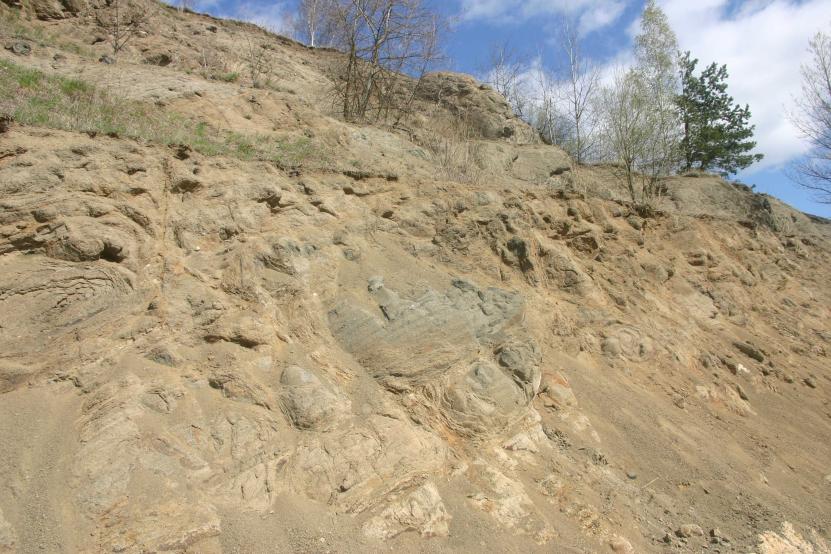
Study of sedimentary basins
Volcanic activity affects the evolution of sedimentary basins in several ways as well. It alters the geometry of basins, produces distinctive landforms at their margins, is a source of specific clastic material, and also affects the chemistry of the environment including water. This is reflected in the lithological composition of sediments and also, for example, in the isotopic composition of freshwater limestone. The isotopic composition of limestone precipitated at the margin of a basaltic volcano has a distinct mantle signature and may resemble the composition of carbonatite.
Study of organisms buried by volcanic processes
Volcanic processes are fast enough to quickly bury entire communities of organisms. However, these dynamic processes often destroy the remains of organisms, and larger and more solid organisms, such as trees, are more likely to be fossilized. The mineralization of trunks buried by volcanic processes is an important subtopic of the research. Mineralogical, geochemical and isotopic (C-O-Sr) methods are employed to reconstruct the burial environment and conditions for individual trunks, as well as to address the process of gradual mineralization of buried trunks. In an environment of alkaline volcanic deposits, buried trunks are in fact mineralized with a wide range of mineral phases.
A significant part of the research team‘s work involves the popularization of scientific outputs in various forms, including publicly available animations.
Evolution of the quaternary environment and study of exogenic processes
Within the scope of basic research, the scientific activities of the CGS focus on reconstructing the environment and temporal course of the key epochs of the Quaternary, mainly in Central Europe. These primarily include the transition from the Lower to Middle Pleistocene (referred to as the Mid-Pleistocene Revolution) and the Pleistocene–Holocene transition, when fundamental changes occurred in the formation of landscapes and evolution of communities of organisms. CGS research teams mainly study the dynamics of periglacial (frost-induced) fluvial and eolian processes and also the continental glaciation in Central Europe during the Ice Age, when ice sheet margins extended from the north to Central Europe. Various methods and techniques are employed for this purpose, including exposure dating of sheet erosion and land surface denudation using cosmogenic radionuclides deposited on the upper part of the Earth‘s surface over long periods due to incoming cosmic rays.
Video below: Drilling of eolian sediments in the Moravian Sahara to collect samples for geochronological and micromorphological analyses.
Research abroad
Long-term research in the James Ross Island Group near the Antarctic Peninsula focuses on the timing of deglaciation leading to the formation of the largest deglaciated areas on the Antarctic Peninsula as well as on the dynamics of natural and climatic evolution during the Holocene, reconstructed from lacustrine sedimentary records. Geoarchaeological investigations being conducted around Lake Ohrid in North Macedonia or in the Shaqadud Mountains of Central Sudan provide many interesting insights into the impacts of climate and tectonic activity on prehistoric civilizations.
